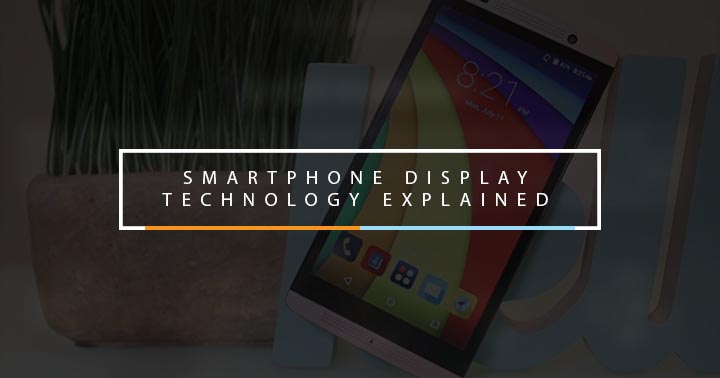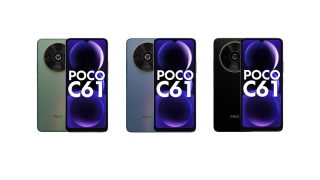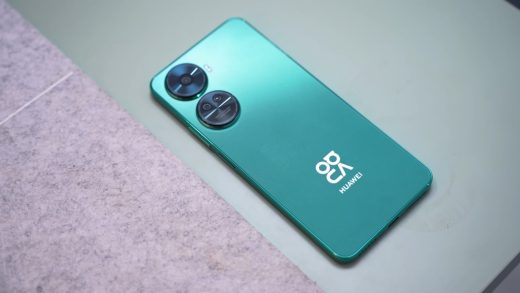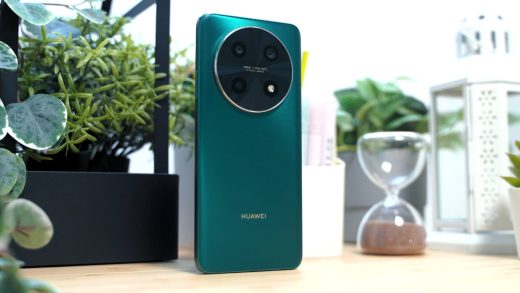Smartphone displays may all look the same to some users. Although if you’d compare phones and look at the specs sheet, you may see some unfamiliar abbreviations when you check the technology used on the screen.

In reality, smartphone panels differ in a lot of ways like brightness produced, contrast, power consumption, viewing angles, and more. This quick guide aims to define and identify these technologies that came from different companies.
Table of Contents
LCD
Let’s first start with the basics. An LCD or Liquid Crystal Display is a type of panel that uses liquid crystals which are back-lit. It’s one of the most common and widely-used technology since they are easily manufactured and doesn’t cost a lot to produce.
In general, it performs well under sunlight since the cells are illuminated from behind. The only drawback is that it doesn’t reproduce color as faithful and accurate as other displays that don’t go for this approach.
TFT LCD
Short for Thin Film Transistor, TFT LCD is basically an improved version of LCD wherein an extra transistor and capacitor are both attached to each pixel. This is the same active matrix (AM) technology used in AMOLED displays which we’ll discuss later on.
Because of this, TFT LCDs are able to produce images with better contrast than the usual LCDs. They are also still cheap to produce. Although, viewing angles generally aren’t that impressive while color reproduction is a bit altered. They are now commonly used in low-end devices.
IPS LCD
If TFT has one sheet of transistor supporting each pixel, LG Display’s IPS or In-Plane Switching LCDs make use of two transistors for each pixel which is then illuminated with a stronger backlight. This results to way better viewing angles than TFT and a more faithful color reproduction. Any image viewed within 178 degree from all four sides will retain clear details.
One downside, though, is that since it uses a more powerful backlight, it requires slightly more power from the battery as compared to handsets that use non-LCD panels. These are used in majority of handsets today.
STN LCD
A Super-Twisted Nematic display is a type of monochrome passive-matrix LCD that has an even lower cost of production than TFT LCDs. It also consumes less power than both the TFT and IPS displays which is a good thing, but the issue here is that it shows lower image quality and slower response time than TFT panels.
Additionally, STN LCDs can also be reflective which makes it visible even under direct sunlight. Because of this, it is being used for inexpensive phones and informational screens of digital devices.
TFD LCD
TFD stands for Thin Film Diode which was made as a sort of getting the best of two things. It has the low power consumption of STN LCDs but since it doesn’t yield very impressive picture quality, it made use of the imaging performance of a TFT LCD.
This is done by pressing diodes together between two pieces of thin glass and the outcome proved that it had faster refresh rates with ghosting kept to a minimum.
IPS Neo
A product of Japan Display Inc. (JDI), IPS Neo addresses the issues involved in manufacturing liquid crystal panels such as affecting the production yield due to unwanted foreign particles included in the process.
There’s a detailed scientific process that involves using highly transmissive liquid crystals but basically, because of this unique method from the company, IPS Neo displays give off a higher contrast with flexible viewing angles. This implementation also makes it possible to mass produce these panels which was previously thought to be difficult.
Super PLS LCD
This specific type of screen is from Samsung Mobile Display and was introduced back in 2010. Super PLS (Plane to Line Switching) were made for LCDs and is an improvement to LG Display’s IPS panels. The company claims that Super PLS is ‘about 100%’ better when talking about viewing angles — putting it in the league of AMOLED displays. It is also 10% brighter which would greatly benefit users when used outdoors.
Additionally, Super PLS displays can support up to WXGA resolution (1280 x 800) and also costs less to produce (about 15%) than the IPS panels of LG.
AMOLED
The Active-Matrix Organic Light-Emitting Diode, or simply AMOLED, was started to be used in mobile phones in 2008. As we’ve mentioned earlier, it uses active matrix but this time for OLED pixels which is simply another term for thin-film display technology . It basically generates light upon electrical activation after combining with a TFT array and has all the characteristics of an OLED display like lively color reproduction, high brightness and sharpness, and is lightweight.
One of the noticeable differences of using AMOLED screens is its deep blacks. This is possible since OLED displays are always off by default unlike LCD panels that are always back-lit. Apart from showing true blacks (since the cell is basically turned off), it also consumes less power.
These are some of the reasons why it quickly gained popularity on high-end devices and because of this, more manufacturers have made the switch from TFT LCDs. Of course, it also has some cons to it. AMOLED displays don’t perform as well as back-lit LCDs under direct sunlight and diode degradation happens over time since they are organic.
Super AMOLED
Rounding up the list is the Super AMOLED display that we commonly see on mid- to high-end Samsung handsets. They are obviously an advanced counterparts of AMOLED displays from the South Korean company and are built with touch sensors right on the display unlike implementing a separate touch-sensitive layer. This move makes Super AMOLED displays one of the thinnest displays available for electronic devices.
In addition, they are also a lot more responsive when compared to AMOLED displays. Performance outdoors where there is direct sunlight has also improved here while requiring even less power from the battery.
We hope that this quick guide helped you in understanding more about the displays when looking at a smartphone’s specs sheet. If you have any more questions or additions to the article, chime in on the comments section below.
































How about super IPS
Are Super AMOLED diodes organic too?